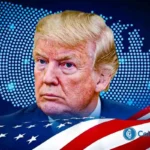AI art has emerged as a fascinating intersection of creativity and technology, transforming how we think about artistic expression. Through various machine learning techniques, artists and non-artists alike can harness the power of algorithms to generate unique visual and auditory experiences. This article delves into what AI art entails and explores its creation, impact, applications, and the ethical discussions surrounding it.
What is AI art?
AI art refers to artworks created or enhanced using artificial intelligence technologies. This genre encompasses everything from purely algorithm-generated images to pieces modified by AI tools. By employing machine learning, AI art challenges traditional concepts of artistry and raises questions about authorship and creativity.
How AI art is created
AI art relies on a variety of advanced tools and techniques grounded in machine learning. These technologies enable the generation of artwork through complex algorithms.
AI tools and machine learning
AI tools function through machine learning algorithms that have been trained on vast datasets of existing art. By analyzing this data, they learn to recognize styles, patterns, and elements that can be creatively combined.
Technologies used in creation
Several key technologies facilitate AI art creation:
- Generative adversarial networks (GANs): This approach uses two neural networks—the generator and the discriminator—to create new images based on user input.
- Convolutional neural networks (CNNs): Primarily applied to visual data, CNNs analyze images to identify and generate new visuals.
- Neural style transfer (NST): This technique blends the content of one image with the style of another, resulting in new creations.
- Recurrent neural networks (RNNs): Useful in music generation, RNNs create sequential data akin to composing artistry.
The impact and opportunities of AI art
The rise of AI art has significantly democratized creativity, enabling a broader audience to engage in artistic endeavors. This transformation invites a reexamination of creativity and artistry.
Democratization of art creation
AI art tools empower individuals with diverse skill levels, from novice users to seasoned professionals, allowing them to create without traditional barriers. Accessibility opens up new avenues for expression.
Challenging traditional notions of creativity
AI-generated art stirs philosophical debates about what defines art and who qualifies as an artist. By incorporating algorithms into the creation process, the line between human and machine-made art becomes increasingly blurred.
Notable AI art tools
Various AI art platforms have gained prominence, providing unique capabilities for artists to experiment with. Here’s a look at some notable tools:
- Dall-E: Renowned for generating diverse images from textual prompts.
- Stable Diffusion: An open-source text-to-image generator offering flexibility in creation.
- Other notable tools: Adobe Firefly, Artbreeder, Deep Dream Generator, DreamStudio, Midjourney, and Playform.
Accessibility in AI art creation
AI platforms have made significant strides in user-friendliness, opening the door for a wider audience to engage with art.
User-friendly AI platforms
The development of intuitive AI platforms means that even those without technical expertise can create compelling artworks. The interface design and guided processes facilitate ease of use.
Customization and refinement capabilities
Many of these platforms allow users to create or fine-tune AI models, providing an avenue for personal expression while retaining artistic control over their creations.
Applications of AI art
AI art is not limited to traditional art forms; it significantly impacts various fields and practices.
- Art therapy: AI art can be utilized in therapeutic settings, helping individuals express emotions and cope with mental health challenges.
- Education and teaching: AI-generated visuals can enhance learning experiences by illustrating complex artistic concepts.
- Art and music creation: AI facilitates innovative processes in producing both visual art and music compositions.
- Enhancing existing artworks: AI tools offer methods for artists to rejuvenate and modify traditional pieces.
- Inspiration and idea generation: Artists can use AI to spark creativity and discover new artistic directions.
Ethical controversies surrounding AI art
Despite its advantages, AI art raises numerous ethical questions that must be addressed.
Authorship and ownership
The question of who owns the rights to AI-generated works is complex. Determining the true creator can be challenging, especially when multiple inputs contribute to the final piece.
Bias in AI outputs
Concerns arise from inherent biases in the datasets used for training AI models. These biases can influence the final art outputs, leading to skewed representations.
Copyright concerns
Legal frameworks surrounding copyright are being tested by AI art production, as traditional laws may not adequately cover algorithmically generated works.
Originality debates
The originality of AI-generated art is a contentious topic. Critics argue that if art is produced using existing styles and concepts, it undermines traditional definitions of originality.
Historical context of AI art
Understanding the evolution of AI art requires a look at its historical milestones.
Early beginnings
AI art traces its roots back to the 1970s with the Aaron system, one of the first programs capable of producing creative works.
Significant milestones
- 2014: Introduction of GANs revolutionizes image generation.
- 2015: Google releases DeepDream, popularizing AI’s visual manipulation.
- 2018: Launch of Artbreeder and noteworthy sales of AI-generated art pieces.
- 2021: Dall-E makes headlines with its innovative text-to-image capabilities.
- 2022: Google’s Imagen and Stability AI’s Stable Diffusion mark significant advancements in accessibility and creativity.
- 2023: Adobe incorporates AI art functionalities into its core software tools, further solidifying AI’s role in digital art creation.
- 2024: The first artwork created by a humanoid robot, Ai-Da, titled “AI God,” sells at Sotheby’s auction for $1.08 million, highlighting the growing intersection between AI technology and the art market.
- 2025: Refik Anadol, a Turkish-American artist known for his pioneering work with AI, announces the opening of “Dataland,” the world’s first AI art museum in Los Angeles, showcasing the creative potential of artificial intelligence.





